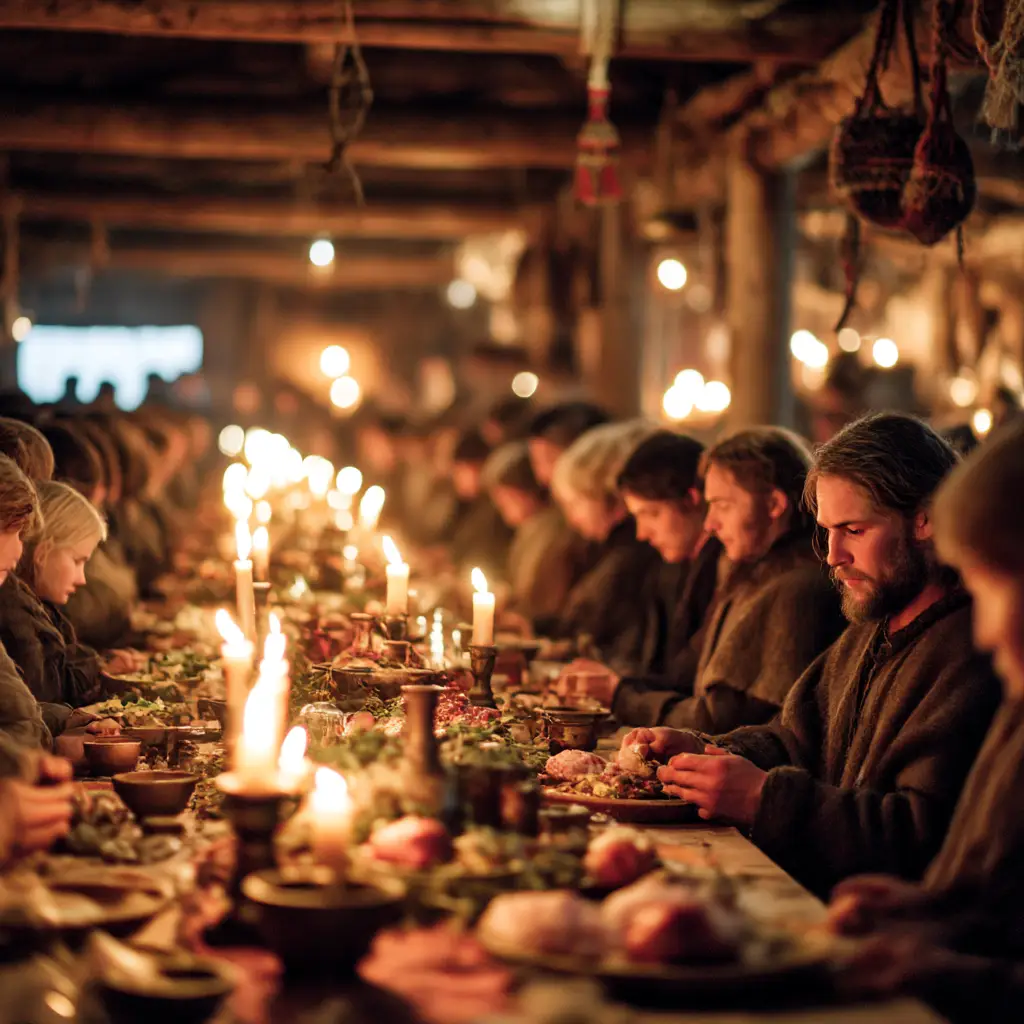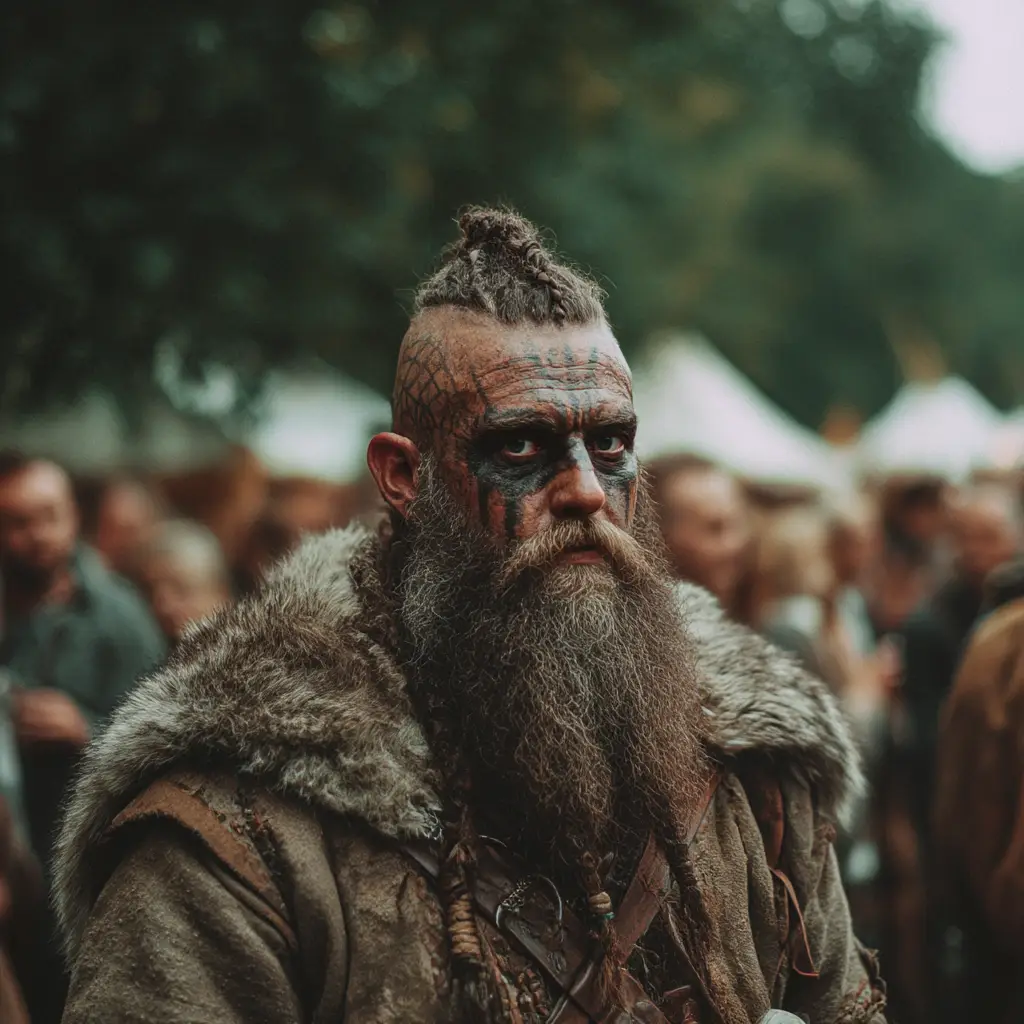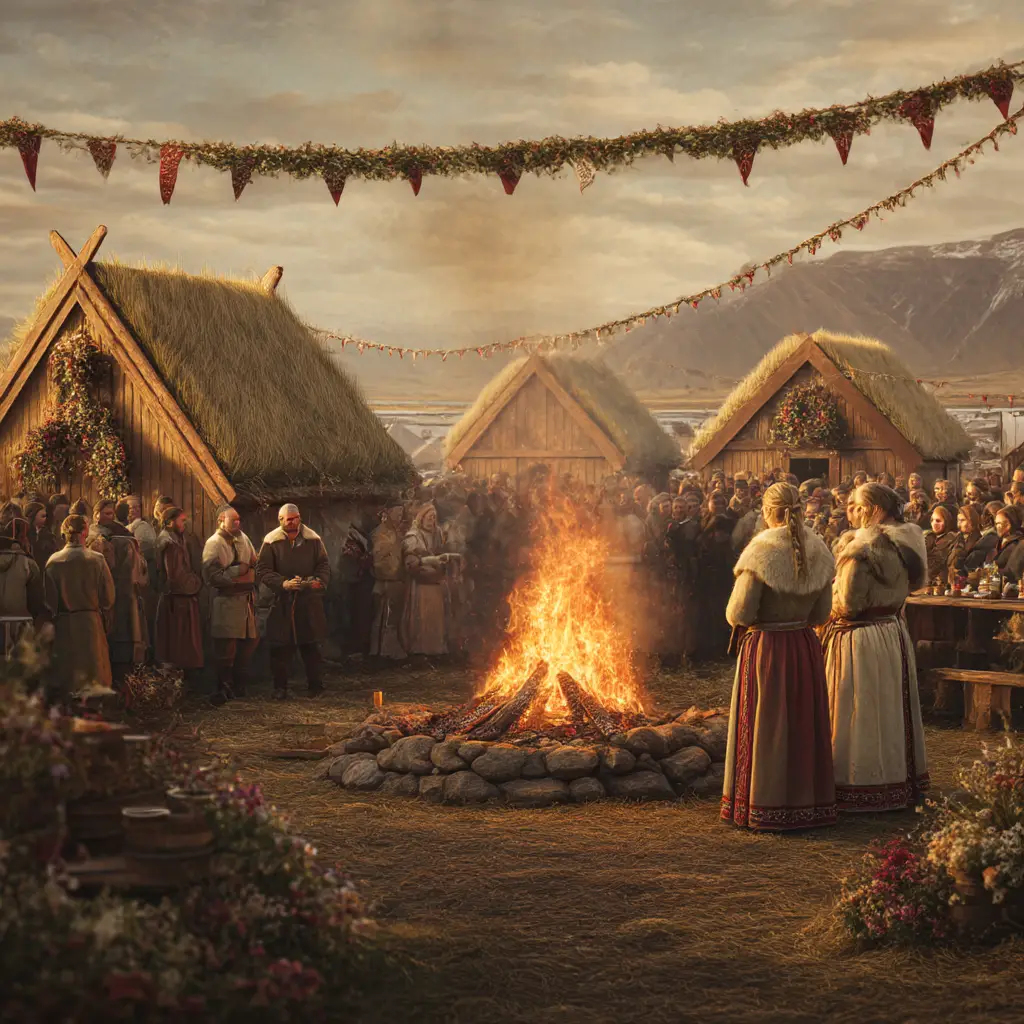Jólablót, often called the Yule Blót, was one of the most important festivals in Norse tradition, marking the turning of the year and the return of the sun after the long winter darkness. It was a time of sacrifice, feasting, and honouring the gods, ancestors, and spirits of the land. The festival was traditionally held around the time of the winter solstice, when the nights were longest, and the people awaited the sun’s rebirth and the promise of longer days.
The word blót means “sacrifice” or “offering,” and the festival’s name combines Jól, the Norse word for Yule, with the sacred act of giving thanks. Jólablót celebrated life, fertility, and the cycle of nature, while strengthening bonds between people, gods, and the community.
During Jólablót, animals were sacrificed to the gods, especially to Odin, Freyr, and Thor. The blood, known as hlaut, was sprinkled on statues of the gods, temple walls, and the gathered people as a blessing. Feasting followed the rituals, with roasted meat, ale, and bread shared among the participants. These communal gatherings often lasted for several days and included toasts to the gods, heroes, and ancestors.
The festival was closely connected to the god Freyr, symbolising fertility, peace, and abundance for the coming year. Fires were lit to drive away darkness, and evergreen branches were brought indoors as symbols of renewal and life enduring through the winter. Mead and ale were brewed specially for the celebrations, and great emphasis was placed on hospitality and generosity.
Jólablót also marked a spiritual renewal. The dark season represented death and stillness, while the returning light symbolised rebirth. It was a time to reflect on the past year, honour those who had passed, and prepare for the new year with hope and gratitude.
With the coming of Christianity, Jólablót gradually merged with Christmas traditions, though many customs—such as feasting, decorating with greenery, and lighting candles—retained their ancient roots. In modern times, Jólablót is still celebrated by followers of Norse paganism and those interested in Viking culture. These contemporary gatherings often include ritual offerings, songs, storytelling, and traditional food and drink, keeping alive the spirit of community and reverence that defined the original Yule celebrations.
Jólablót remains a powerful reminder of the Norse connection to nature, the cycles of the earth, and the enduring importance of honouring both ancestors and the divine forces that sustain life.



